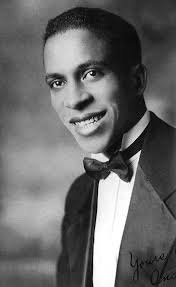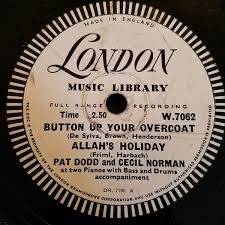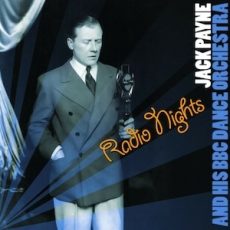
Jazz Poems
BLACK AND BLUE
(WHAT DID I DO TO BE SO BLACK AND BLUE)
VERSEOut in the street,
Shufflin’ feet,
Couples passin’ two by two,
While here am I,
Left high and dry, black, and ‘cause i’m black I’m blue.
Browns and yellers
All have fellers,
Gentlemen prefer them light.
Wish I could fade,
Can’t makee the grade,
Nothin’ but dark days in sight.
REFRAIN
Cold empty bed,
Springs hard as lead,
Pains in my head,
Feels like old Ned,
What did I do
To be so black and blue?
No joys for me,
No company,
Even the mouse
Ran from my house,
All my life through
I’ve been so black and blue.I’m white
Inside,
It don’t help my case
‘Cause I
Can’t hide
What is on my face,ooh!
I’m so forlorn,
Life’s just a thorn,
My heart is torn,
Why was I born?
What did I do
To be so black and blue?
REFRAIN
Just ‘cause you’re black,
Folks think you lack,
They laugh at you
And scornyou too,
What did I do
To be so black and blue?
When you are near,
They laugh and sneer,
Set you aside
And you’re denied,
What did I do
To be so black and blue?
How sad I am
Each day I feel worse,
My mark of Ham
Seems to be a curse, ooh!
How will it end?
Ain’t got a friend,
My only sin
Is in my skin,
What did I do
To be so black and blue?
ANDY RAZAF | 1895~1973
MUSIC BY THOMAS “FATS” WALLER
from Jazz Poems ~ Selected and Edited by Kevin Young
More Posts: book,classic,collectible,history,jazz,library,poet

Daily Dose Of Jazz…
Clarence Williams was born on October 8, 1898 in Plaquemine, Louisiana to Dennis, a bassist, and Sally Williams. He ran away from home at age 12 to join Billy Kersands’ Traveling Minstrel Show, then moved to New Orleans, Louisiana. He first worked shining shoes and doing odd jobs, but soon became known as a singer and master of ceremonies.
By the early 1910s, he was a well-regarded local entertainer also playing piano, and was composing new tunes by 1913. Williams was a good businessman, working arranging and managing entertainment at the local Black vaudeville theater. He played at various saloons and dance halls around Rampart Street, and in the clubs and houses in Storyville.
He started a music publishing business with violinist/bandleader Armand J. Piron in 1915, which by the Twenties was the leading Black owned music publisher in the country. He toured briefly with W. C. Handy, and set up a publishing office in Chicago, Illinois before settling in New York City in the early 1920s. During the decade he and his blues singer/actress wife Eva Taylor moved to the borough of Queens with the intention of creating a community of black artists.
He was one of the primary pianists on scores of blues records recorded in New York during the 1920s. He supervised the 8000 race series recordings for the New York offices of Okeh phonograph company in the 1920s. He also recorded extensively, leading studio bands for OKeh, Columbia, Vocalion, Bluebird and occasionally other record labels.
As a producer he participated in early recordings by Louis Armstrong, Sidney Bechet, Bessie Smith, Virginia Liston, Irene Scruggs, his niece Katherine Henderson, and others. Most of his recordings were songs from his publishing house.
In 1943, he sold his extensive back-catalogue of tunes to Decca Records for $50,000 and retired. He bought a bargain used-goods store, the Harlem Thrift Shop.
Pianist, composer, promoter, vocalist, theatrical producer, and publisher Clarence Williams, died on November 6, 1965 in Queens, New York.
More Posts: bandleader,composer,history,instrumental,jazz,music,piano,producer,promoter,publisher,vocal

Daily Dose Of Jazz…
Cecil Norman was born on September 29, 1897 in Oldham, Lancashire, United Kingdom. Considered a child prodigy, by the age of 11 he was playing concertos, at 15 he appeared at London’s Aeolian Hall. He was the son of music hall artists, billed as Olga and Otto, with his mother playing trumpet, trombone, concertina and piano.
Cecil stayed in London during World War II, with many engagements to entertain the troops, accompanying Vera Lynn as well as Inga Anderson, who sang with the George Melachrino Orchestra. After serving in World War I, he switched from classical to popular music, partly due to developing neuritis in the right hand, which forced him to give up the piano for a couple of years. Thereafter Cecil specialised in dance music, it being less likely to aggravate his condition.
He played in so many popular bands it’s hard to list them all, however in 1924 along with his alto saxophonist brother Leslie began their own band at the Savoy Hotel for tea dances and the Bekeley Hotel in the evenings. They soon moved to the Empress Rooms where they played seven days a week plus tea dances. At times, either he or his brother were in charge and arranging for the Savoy Plaza Band and Savoy Dance Band. In 1927, the Norman Brothers Band moved to Carlton Hotel. In 1928, Cecil went to America and had Rudy Vallee introduce him around, including to Bert Lown, whom he joined in New York.
Moving back to London in 1929, Cecil played and recorded with Fred Elizalde Band in 1930 before moving to Jerry Hoey’s band and Melville Gideon’s band in 1931. He went on to join several other bands in London and Australia, including the BBC Dance Orchestra. He stayed in London during World War II, with many engagements to entertain the troops, accompanying Vera Lynn as well as Inga Anderson, who sang with the George Melachrino Orchestra.
After the war, Norman formed the Rhythm Players that became the cornerstone of the BBC’s Music While You Work program in the 1950’s. Over the course of his career he composed several instrumental numbers. He retired in 1962 when he was 65 after suffering an accident. He returned one last time for a 15-minute spot in 1970, ending his more than sixty years in music.
Dance pianist & composer Cecil Norman, who used the pseudonym Norman Sissel for some Norman Sissel And His Rhythm Twisters recordings, died February 8, 1988 aged 91 in East Sussex, England.
More Posts: bandleader,history,instrumental,jazz,music,piano

Daily Dose Of Jazz…
Jack Payne was born John Wesley Vivian Payne on August 22, 1899 in Leamington Spa, Warwickshire, England. He is the only son of a music publisher’s warehouse manager and it wasn’t until he was serving in the Royal Flying Corps that he played the piano in amateur dance bands. Towards the end of World War I, he led dance bands for the troops and was part of a voluntary group The Allies Concert Party that performed to wounded soldiers convalescing around Birmingham.
He played with visiting American jazz bands at the Birmingham Palais during the early 1920s, including the Southern Rag-a-Jazz Orchestra in 1922, before moving to London in 1925. He played in a ten-piece band which became the house band at London’s Hotel Cecil. Three years later Payne became the BBC Director of Dance Music and the leader of the BBC’s first official dance band.
After leaving the BBC in 1932 he returned to playing hotel venues and switched labels to Imperial, followed by Rex from 1934. Payne took his band on nationwide tours and made a couple of films, composed and published waltzes, and recorded jazz working with Garland Wilson.
>Returning to the post of Director of Dance Music at the BBC until 1946. Bandleader and composer Jack Payne, who authored two autobiographies, died in Tonbridge, Kent, England on December 4,1969, aged 70.
More Posts: author,bandleader,composer,history,instrumental,jazz,music

Jazz Poems
suddenly in the midst of a game of lotto with his sisters
Armstrong let a roar out of him that he had the raw meat
Red wet flesh for Louis
and he up and sliced him two rumplings
since when his trumpet bubbles
their fust buss
poppies burn on the black earth
he weds the flood he lulls her
some of these days muffled in ooze
down down down down
pang of white in my hair
after you’re gone
Narcissus lean and slippered
you’re driving me crazy and the trumpet
In Ole Bull it chassés aghast
out of the throes of morning
down the giddy catgut
and confessing and my woe slavers
the black music it can’t be easy
it threshes the old heart into a spin
into a blaze
Louis lil’ ole fader Mississippi
his voice gushes into the lake
the rain spouts back into heaven
his arrows from afar they fizz through the wild horses
they fang you and me
then they fly home
flurry of lightning in the earth
sockets for his rootbound song
nights of Harlem scored with his nails
snow black slush when his heart rises
his she-notes they have more tentacles than the sea
they woo me they close my eyes
they suck me out of the world
ERNST MOERMAN Translated by Samuel Beckett
from Jazz Poems ~ Selected and Edited by Kevin Young
More Posts: book,classic,collectible,history,jazz,library,poet




